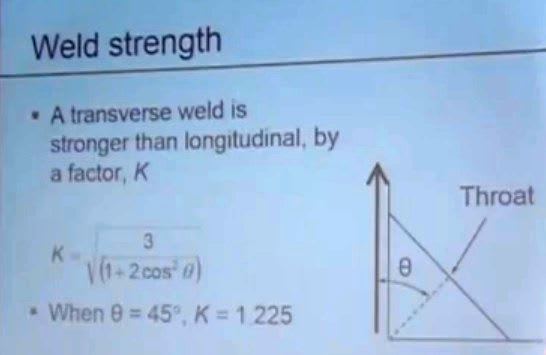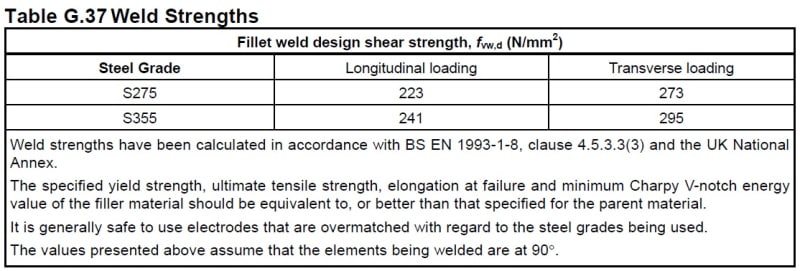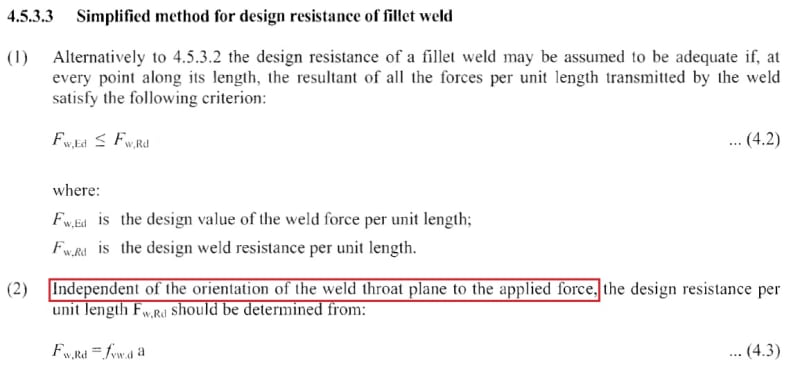Hello everyone.
Maybe my question seems strange to someone, still I'm confused.
The UK "Green book" on connections has table G.37 (Weld strengths) which has two columns - longitudinal loading and transverse loading, the difference between these values is 1.225. I can't actually find this in the Eurocode itself, but here's a prinscreen from the lecture presented by Mr. David Brown (SCI) who says, that we might increase the bearing resistance of the weld by this value when it is a "transverse weld".
Eurocode, on other hand insists, that shear strength of the weld doesn't depend on the direction of the force.
Here're some pics.
Printscreen from the lecture I mentioned:

The Green Book table:

Eurocode clause:

Someone, please, clarify my confusion![[surprise] [surprise] [surprise]](/data/assets/smilies/surprise.gif)
Maybe my question seems strange to someone, still I'm confused.
The UK "Green book" on connections has table G.37 (Weld strengths) which has two columns - longitudinal loading and transverse loading, the difference between these values is 1.225. I can't actually find this in the Eurocode itself, but here's a prinscreen from the lecture presented by Mr. David Brown (SCI) who says, that we might increase the bearing resistance of the weld by this value when it is a "transverse weld".
Eurocode, on other hand insists, that shear strength of the weld doesn't depend on the direction of the force.
Here're some pics.
Printscreen from the lecture I mentioned:

The Green Book table:

Eurocode clause:

Someone, please, clarify my confusion
![[surprise] [surprise] [surprise]](/data/assets/smilies/surprise.gif)
